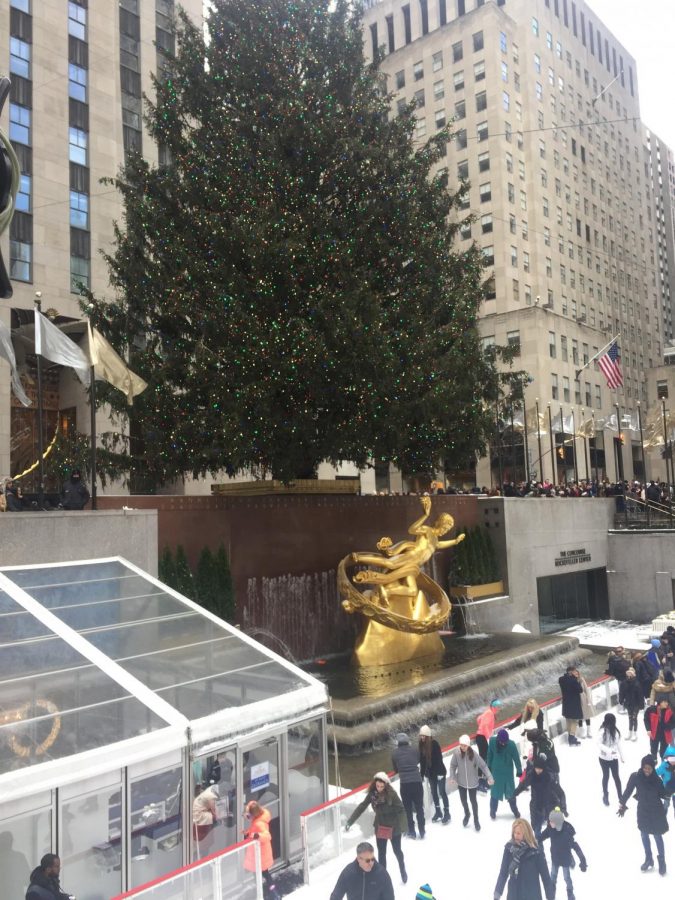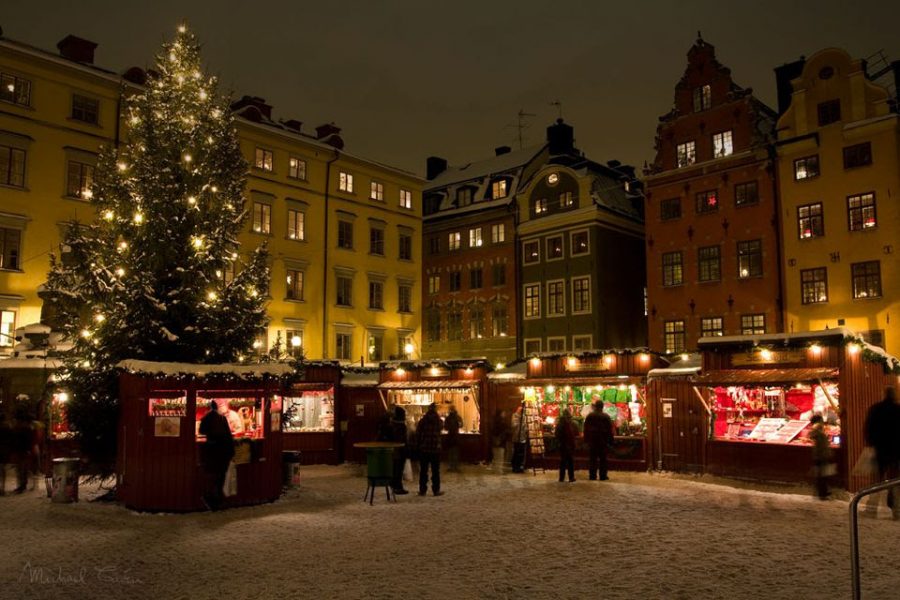During the holiday season, it is no strange sight to walk into a Target and see aisles filled to the brim with various Christmas decorations. Just like it is no surprise to see the towering Christmas tree in the center of the mall, or to notice kids sitting on Santa’s laps saying what they want for Christmas. Christmas cards flood in, piling up in mail boxes, along with people crowding their Amazon shopping carts with presents for various friends and family members. Christmas is no longer just a religious holiday; it has become increasingly commercialized in the United States over the years. The retail industry makes an exorbitant amount of money off of the holiday, and both Christians and non-Christians are spending plenty on all aspects of Christmas.
Christmas has evolved into a secular and commercial holiday, but it originated as a Christian holiday. Christmas commemorates the birth of Jesus Christ, and it is celebrated as a religious holiday around the world. Many Christians celebrate by attending church on Christmas or Christmas Eve.
In the U.S., Christmas involves both religious and secular elements; it is celebrated by both religious and nonreligious Americans. Christmas became a federal holiday in 1870 under President Ulysses Grant. Prior to it becoming an official holiday, Christmas was celebrated in a much different fashion. In the first half on the 19th century, Christmas was celebrated differently by communities across the country. It was celebrated as a religious holiday by Christians. It was also celebrated with parties, music, drinking and eating. In the mid 1800s, many Americans started to follow the European traditions of Christmas trees and giving gifts. By the end of the 1800s Americans embraced decorating trees, caroling, baking and shopping. Since then a variety of factors, including advertising and marketing, have led to Christmas becoming the holiday it is today.
Now Christmas is perhaps the most commercialized holiday. This year, holiday retail sales are predicted to be around $680.4 billion. In 2016, holiday retail sales amounted to about $655.8 billion. This is a sharp increase from the year 2000, when sales were $399. 53 billion. With the exception of the economic recession in 2008, holiday retail sales have been rising since 2000.
There are many factors that have fed Christmas’ increased commercialization. A large one is the pride of the North Pole: Santa Claus. In the early 1900s, Santa was a spooky-looking character, unlike the jolly bearded image pasted throughout stores nowadays. Coca Cola is credited for producing the Santa that Americans know and love. They began producing ads containing Santa in 1920. Coca Cola commissioned illustrator Haddon Sundblom to create a more wholesome, jolly Santa for their advertisements. By 1931 Santa appeared in Coke ads in popular magazines. Santa has become an integral part of Christmas, appearing in ads, movies and books. His face is plastered on wrapping paper; he can be found in the mall and motivates children to behave so they will receive presents from him under their Christmas tree.
Another Christmas character that has led to the commercialism of Christmas is Santa’s friend Rudolph the Red Nosed Reindeer. America’s favorite reindeer came from a marketing campaign in 1939 by retail company Montgomery Wards. Robert L. May, a company advertising copywriter, wrote the book. Since then Rudolph has become a Christmas staple. The television special came out in 1964 and the movie came out in 1998. Rudolph has been apart of other movies and is one of the most commercialized Christmas characters.
Fictional persona are not the only elements that have added to Christmas becoming more materialistic. The act of gift giving has become one of the major aspects of Christmas. Black Friday and Cyber Monday have increased and encouraged shopping for Christmas presents. Christmas cards are also a part of the Christmas market. Decorations such as lights and wreaths, along with wrapping paper, claim people’s money. A grand aspect of Christmas’ commercialism is how much money Americans spend on Christmas each and every year.
Christmas has also turned into more of a cultural holiday in the U.S.; it is no longer a purely religious event. A study done by Pew Research Center found that about 81% of non-Christians celebrate Christmas. The survey also found that Americans of other faiths celebrate; nearly three-quarters of Asian-American Buddhists and Hindus commemorate Christmas. Overall, the American Christmas has become less of a religious holiday and more of a commercial one. Both Christians and non-Christians participate in the commercial aspect of Christmas, but non-Christians do not celebrate the religious significance.
Even though Christmas has become more commercialized, it is still a great holiday to spend time with friends and family. The holiday cheer spills into people’s homes and brings them joy as the New Year approaches. Christmas cards and cookies tend to put smiles on people’s faces. Watching Rudolph the Red Nosed Reindeer while sipping hot chocolate out of a snowman mug can be a simple, yet great, pleasure. The commercialization of Christmas has led to parts of the holiday season that everyone can enjoy.










































